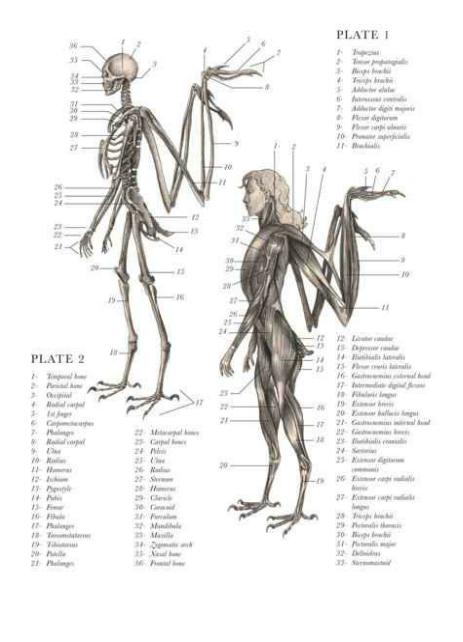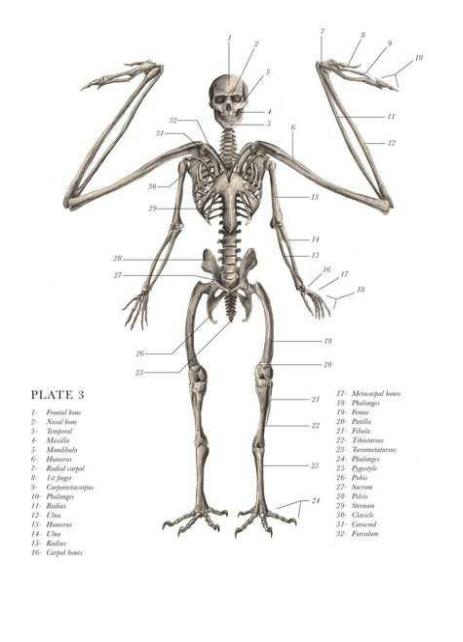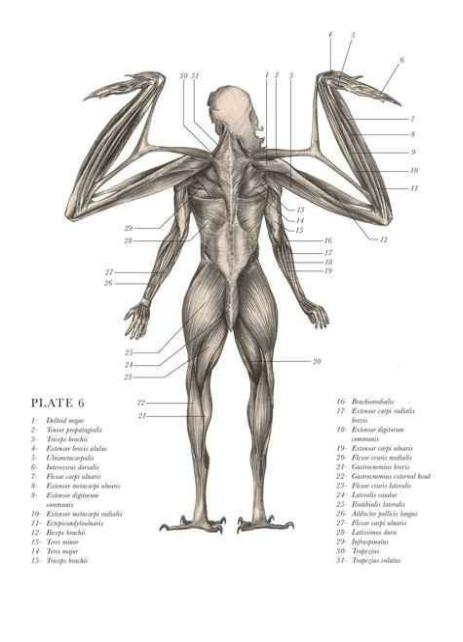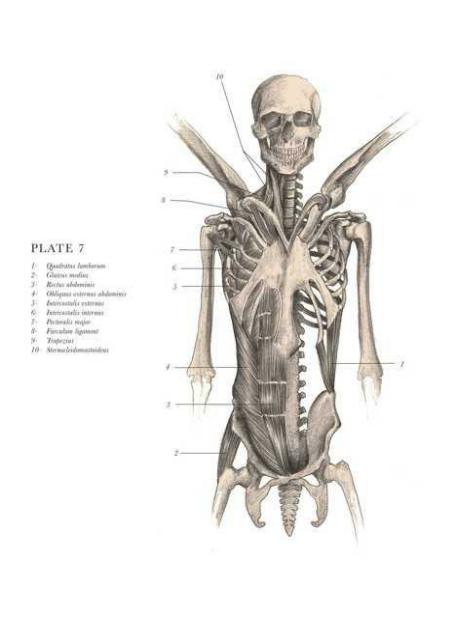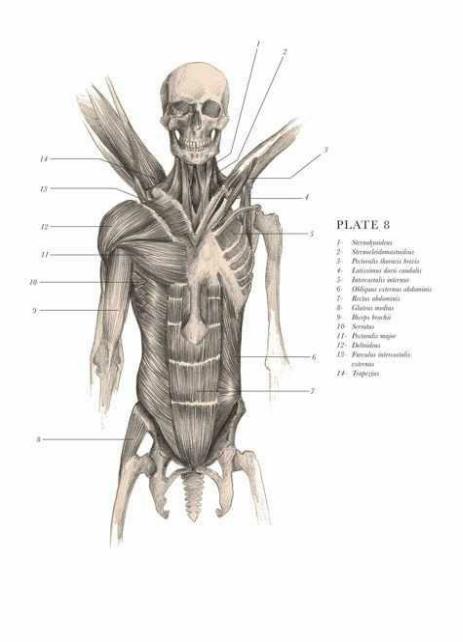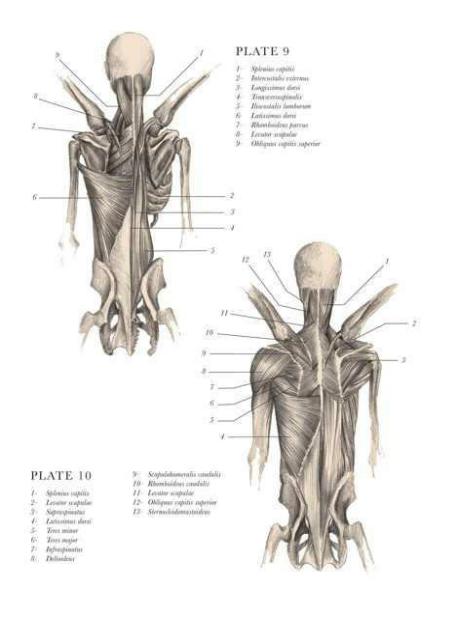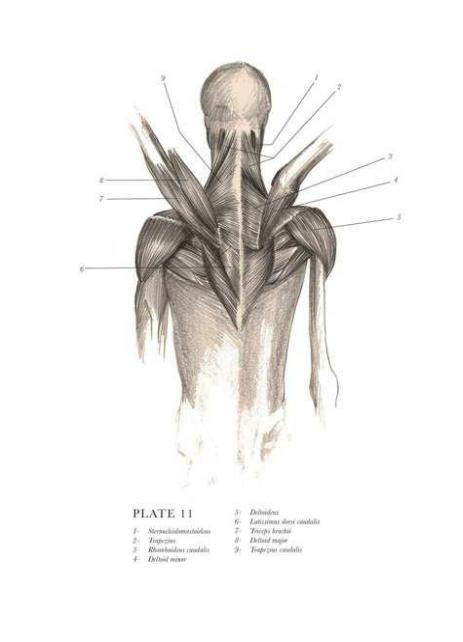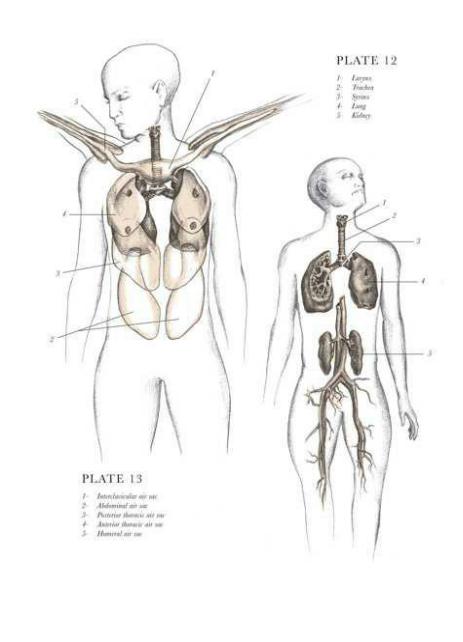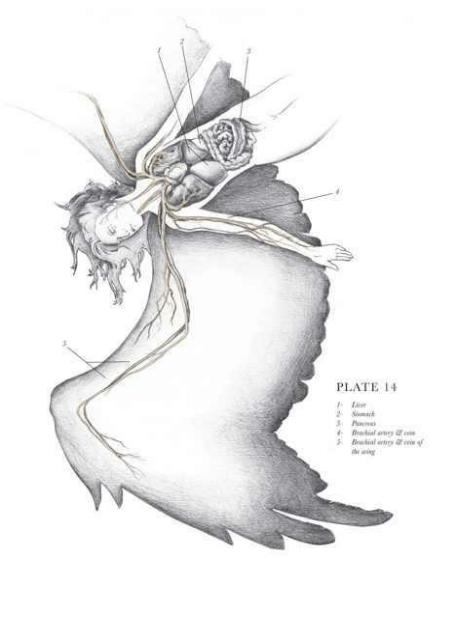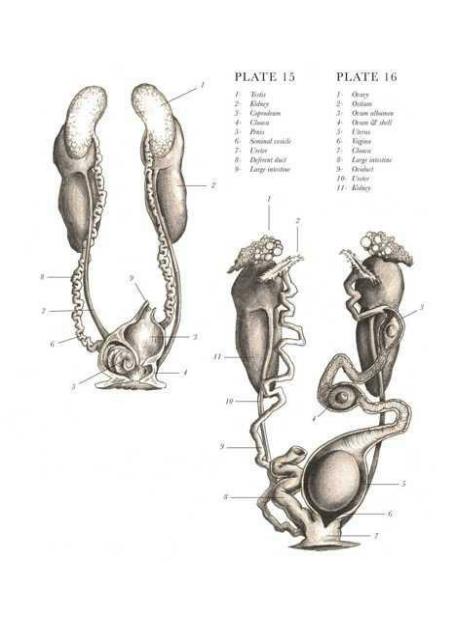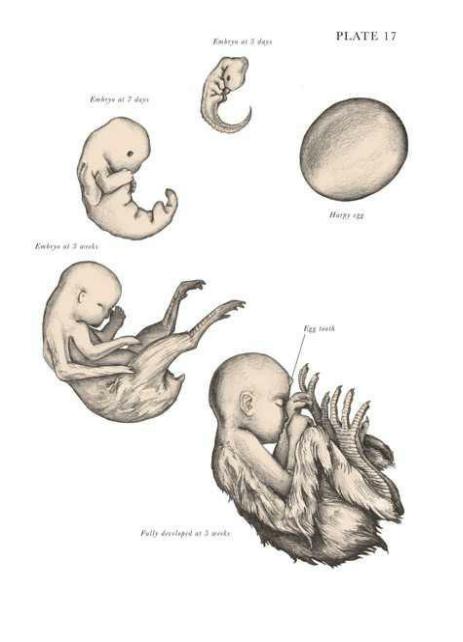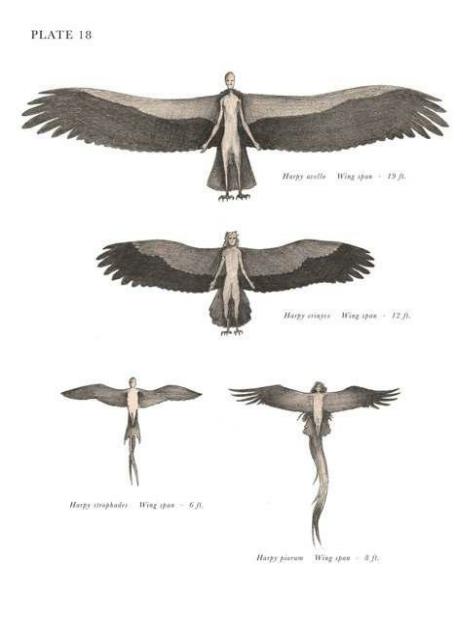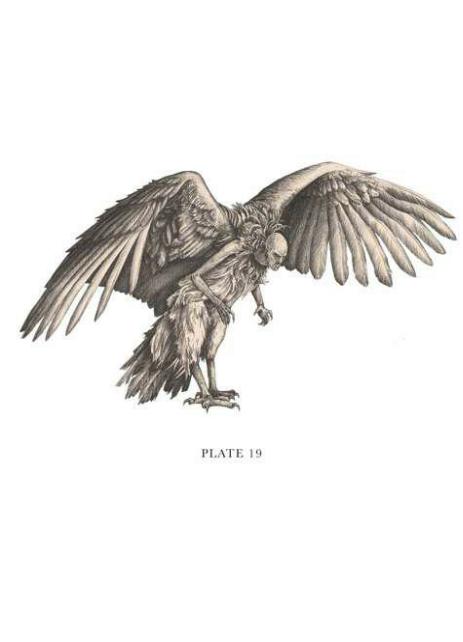
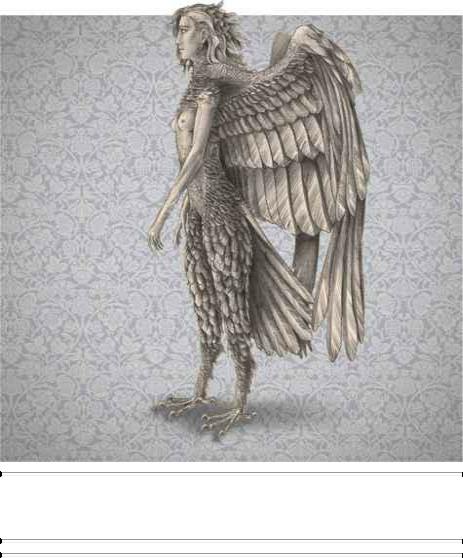
HARPY ERINYES
KINGDOM Animalia
PHYLUM Vertebrata
CLASS Mammalatus
ORDER Harpyiaforme
FAMILY Harpyiadæ
GENUS Harpy
SPECIES Harpy erinyes
THE HARPY IS THE mother of all wonders. She was once beloved as a beautiful goddess; more recent portrayals depict her as a wretched beast. I suspect this confusion results from observers viewing different species of the harpy family and ignorantly thinking them to be the same. A likeness can readily be made with other similar species: the cherubim, the Boreads, and a host of others. The species that is studied here is one of the ancient ones, quite unlike its larger and more distasteful cousins.
The smaller harpies do not possess the additional limbs characterized in the likeness of human arms; they are more fowl than human. They do maintain what is clearly a
human head and neck; a protrusion in the maxilla forms a hard beak-like ridge underneath the lips, both top and bottom. Only the deep teeth remain: molars and wisdom teeth. The incisor and canine groups are replaced with the beak. The surface of the face (capital and submalar tracks) is cloaked with a fine layering of feathers, making it appear like an ordinary bird’s when viewed from a distance.
Like many other birds, the harpy has a sophisticated air circulatory system composed of sacs that assist in cooling and allow uninterrupted flow of air through their lungs. This mechanism grants the animal the ability to breathe continuously, even during exhalation. The sacs also contribute to lowering body heat from the wing extremities and internal organs.
The harpy’s reproductive system is similar to that of a bird. She has one active ovary and lays eggs. The size of the eggs would have been quite large, perhaps 17–20 centimeters in diameter, and the time of gestation for the newborn would have been nearly five weeks. The young would exit the shell with the help of an egg tooth (a small rigid spike on the forehead used for breaking the egg, which goes away in its early life).
Possessing both the syrinx and the larynx allowed the dual functions of birdsong and the ability to speak. Nevertheless, no evidence of a harpy language has yet been found. Its vascular system bears no great riddles;
there is the presence of a complex array of arterial and venous structures that are not foreign to the practitioner of medicine and anatomy.
Additional notes regarding the physiology: lacking a gizzard but instead having a human stomach and large pancreas, an intestinal tract shorter than a human’s and still of a greater length than that of a bird’s, a fourchambered heart and particularly large kidneys would allow the harpy to have married the physiological differences of fowl and human in the bosom. I presume its diet would be carnivorous but certainly capable of digesting nearly anything, even if necrotic.
